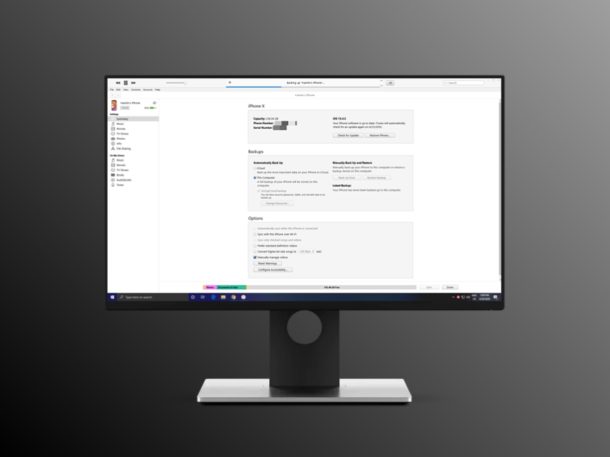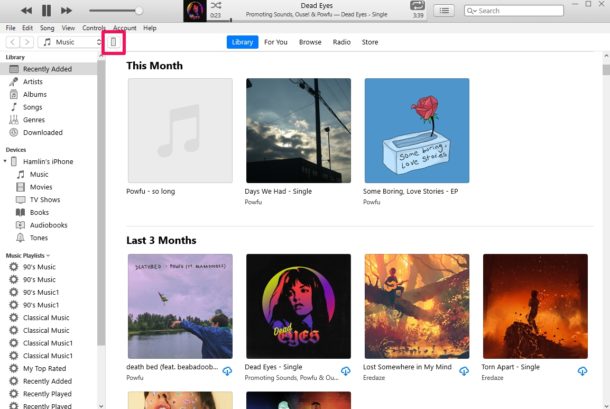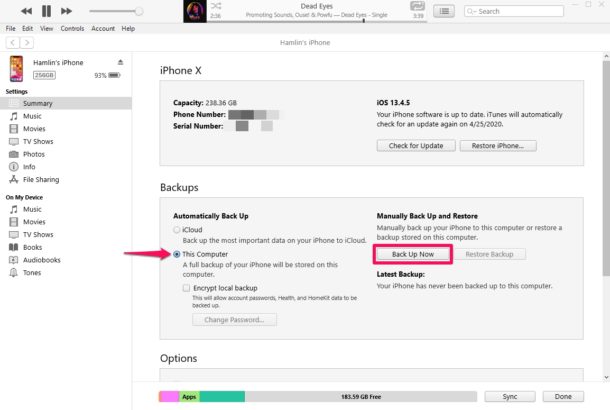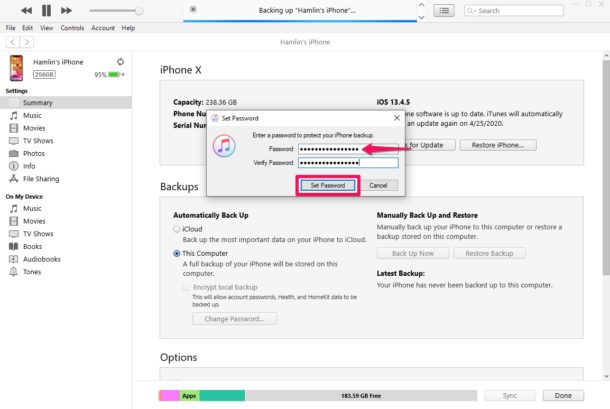How to Backup iPhone or iPad to Windows PC

iPhone and iPad users who have a Windows PC may be happy to know they can backup their iPhone or iPad to Windows PC by using iTunes. Since not all iPhone users have Macs or iCloud, this offers another backup solution for the PC-based user base. And if you’re not paying for iCloud, the chances are that you’re not backing up your iPhone or iPad data to iCloud on Apple’s secure cloud servers. Whether for redundancy or necessity, you can use iTunes software to locally back up all your iPhone and iPad data to your Windows PC, free of cost.
Although Apple offers 5 GB of free iCloud storage with every Apple account, that’s usually not enough to back up many peoples full devices with many photos, music, documents, and other files that are stored on their iOS and iPadOS devices. This essentially forces you to pay at least $0.99 per month for 50 GB of storage, if you want to back up your data to iCloud. You’ll need a solid internet connection to upload all your data too. But of course backing up to a computer offers an alternate option, and by using iTunes to back up your data, you avoid these hurdles.
In this article, we’ll guide you through the necessary steps to back up your iPhone or iPad to a Windows PC using iTunes.
How to Backup iPhone or iPad to Windows PC with iTunes
Before you go ahead with the following procedure, make sure you have the latest version of iTunes installed on your computer. Once you’re done, simply follow the steps below to back up your data.
- Connect your iPhone or iPad to the Windows computer using a USB to Lightning cable and open iTunes. Click on the “device” icon located in the toolbar as shown below.

- This will take you to the summary page for the iOS device you’re using. Here, select “This Computer” under the backups section and click on “Back Up Now” to manually back up your iPhone or iPad.

- Now, you’ll get a pop-up window prompting you to encrypt your backup. If you proceed without encryption, your backups will not include sensitive data like saved passwords, Health and HomeKit data. So, click on “Encrypt Backups”.

- Next, you’ll have to type in a preferred password to encrypt your backup. Click “Set Password” when you’re done. Now, iTunes will start backing up your device. Be patient till it completes, as this could take a lot of time depending on how much data needs to be backed up.

That’s pretty much all there is to it. Now you’ve learned how to locally back up your iPhone and iPad using iTunes. Pretty easy, right?
By default, iTunes backs up the data when your iPhone or iPad is connected to the computer, just before the syncing process. However, this can be changed by turning off automatic sync within iTunes.
You may find it useful to copy the contents of your backup to an external storage drive too, which could come handy in case of a system failure or a drive failure.
Although this method requires you to physically connect your iPhone or iPad to a computer using a lighting cable, this eliminates the need to rely on a fast and stable internet connection. You don’t have to pay for a monthly subscription either. That being said, if you don’t mind paying for iCloud, here’s how you can back up your iOS or iPadOS device to iCloud.
Do you use a Mac instead of Windows? Don’t worry, you can locally backup all your valuable data with Finder in macOS Catalina and Big Sur with ease. The steps are fairly similar too.
We hope you managed to back up your iPhone and iPad to your Windows machine using iTunes. Which method do you prefer for backing up your valuable photos, music, documents and other data? Do let us know your thoughts and opinions in the comments section down below.






This doesn’t work because iTunes wants to set up my perfectly functioning old phone as a new iPhone instead of giving me any Backup options or Summary page
This is how you backup an iPhone to iTunes on Windows, so yes it works.
You may have to setup the iPhone to work with the PC first, if you have never used it with Windows before. Just don’t erase it or set it up as new.
Need to delete iCloud or recover my password
I need ro recover my password otherwise delete all iCloud from my system
@Al – Much like APKMirror and the like for APK files for Android devices, there seems to be dedicated websites out there presenting IPA files for downloading and installing particular iOS apps. The downside is that they tend to be jailbreak-oriented apps, hence you won’t necessarily find versions of apps which you already have or may be looking for. Thus, I don’t feel comfortable presenting any applicable links here.
It looks as though re: your second question, it seems as though particular files cannot be restored from iPhone/iPad backups; it seems all or nothing:
(source: an external webpage) “Any new backups you make will overwrite the old ones. Regarding the restore process, users cannot restore certain types of data from previous backup — you need to restore all data or nothing.”
iTunes used to store App Store apps locally during backups, but Apple changed that behavior in an iTunes update a while ago and now the apps must be downloaded again. There is no way around that.
Apple appears to assume that everyone has world-class ultra high speed broadband internet access all the time with unlimited bandwidth.
As I understand it, iPhone backup does NOT back up your apps. If any of those apps should disappear from the App Store, you will not be able to restore them. Also, it will always restore to the latest compatible version of an app, not necessarily the one you had at backup time. Lastly, is there any way to restore particular files, or do you have to restore the entire iPhone to its previous state?